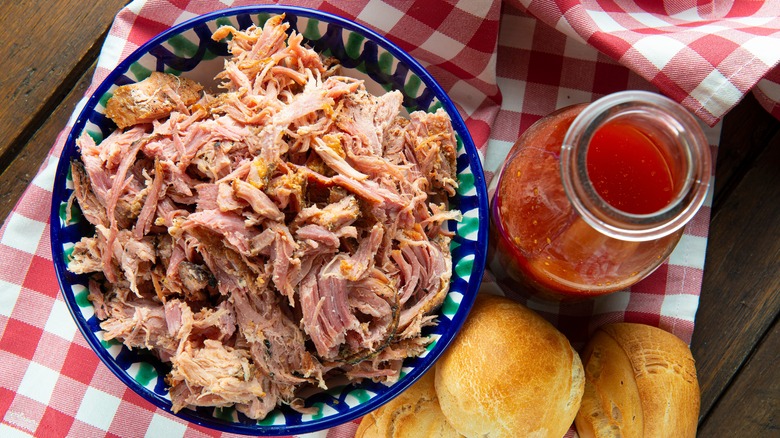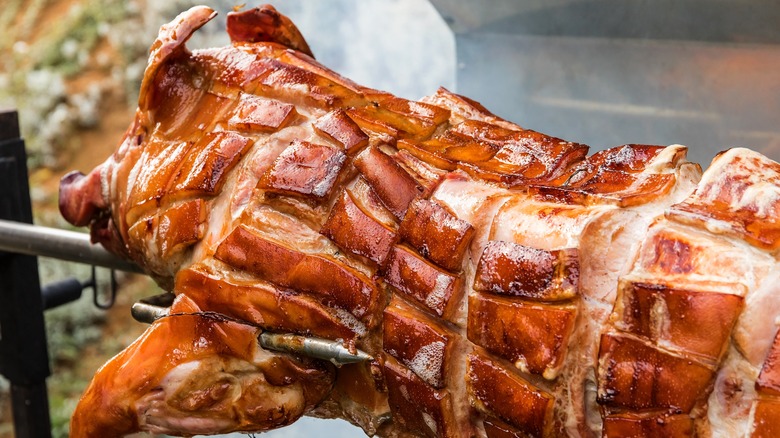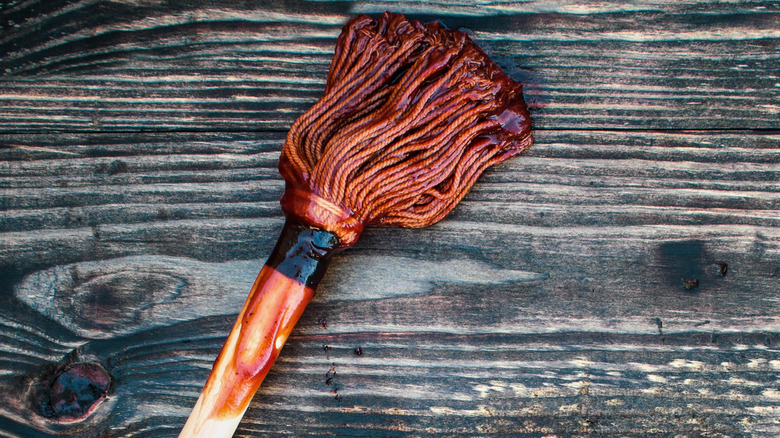What Makes East Carolina-Style Sauce The Go-To For BBQ Lovers?
After you've finished cooking up a hunk of meat in your smoker or on your grill, the next step is to determine which sauce will perfectly pair with it. Unfortunately, deciding to use barbecue sauce for your next cookout isn't anywhere near specific enough. There is a lengthy list of regional barbecue styles, each of which boasts its own unique set of flavors. In Alabama, you can enjoy smoked chicken with a mayonnaise-based white sauce, cooks in parts of South Carolina slather towering pulled pork sandwiches with mustard-based Carolina Gold sauce, and in Central Texas, thick slabs of simply-seasoned, slow-smoked brisket are the star. Additionally, Americans love the sweet barbecue sauce that characterizes Kansas City-style barbecue.
For many BBQ lovers, the quintessential sauce comes from the eastern side of the Carolinas. There, chefs flavor whole pigs with a vinegar-based sauce, which is generously applied to the hog both before and after its time in the pit.
The history of East Carolina vinegar sauce
The earliest barbecue sauces in American history were inspired by the prevalence of citrus in African cuisine. As lemons and limes were hard to come by, vinegar became the choice acid for a sauce base.
It wasn't until later that tomatoes and other sweeteners started to work their way into barbecue sauce recipes. However, East Carolina-style barbecue never drifted far from the condiment's vinegar-centric roots. Chefs in that region still make sauces out of vinegar and spices. In an interview with Food & Wine, James Beard Award-winning pitmaster Rodney Scott explains that the pungent, liquidy sauce is the perfect pairing for pork, a rich and fatty meat. As whole pig roasts are the chosen barbecue method in the eastern Carolina region, vinegar sauce is the obvious choice for cooks.
The contemporary popularity of this sauce style can, in part, be attributed to Adam Scott and Bob Melton. The two Southern gentlemen served whole roast hogs with a simple vinegar sauce at their respective restaurants, both of which opened up in the '50s.
The strange tool used to sop up vinegar sauce
Though it is sometimes served alongside a plate of barbecue, vinegar sauce is also used while the meat is still being cooked. Rodney Scott tells Food & Wine that at his barbecue restaurant, the sauce is applied to a roasting pig at regular intervals near the end of the cook. The thin sauce is introduced to the hog by way of a mop, which earned it the moniker mop sauce.
It may seem strange, but the mop setup serves a practical purpose. Slow-roasting a pig can cause the meat to dry out, and occasionally rehydrating it with the tangy sauce can help prevent that. Furthermore, a mop's head is the perfect tool for soaking up sauce, and its long handle helps prevent you from being burned.
Chefs have been keeping barbecue moist by using a mop sauce for quite some time. Colonists recorded Native Americans using this same technique hundreds of years ago.


